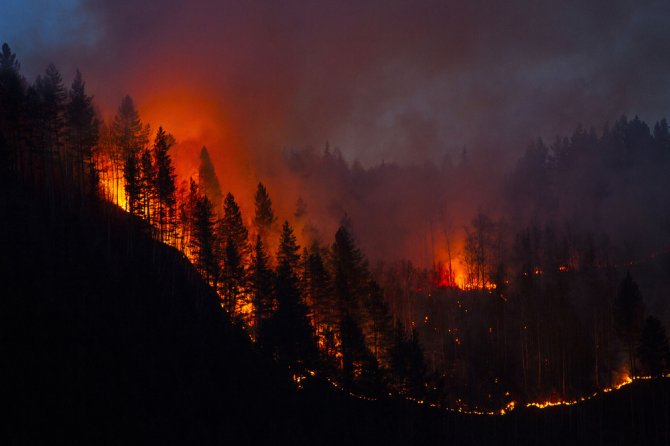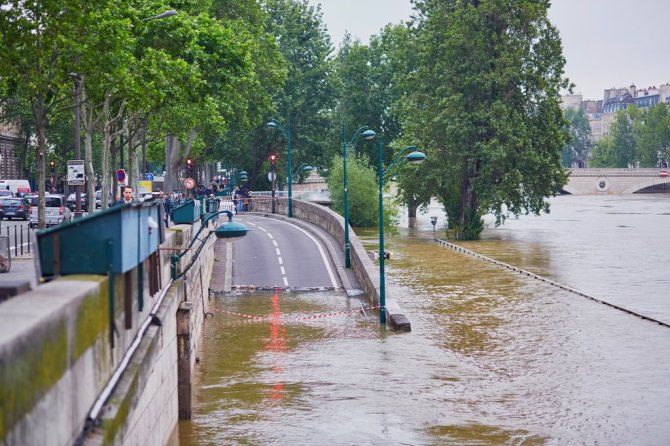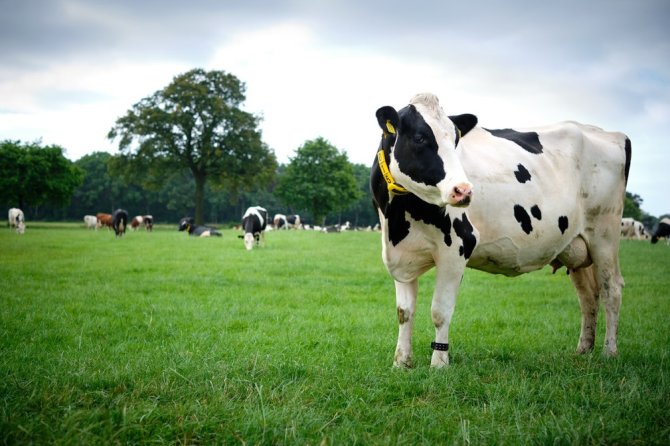
News
Five years of the climate agreement: “We can keep the earth habitable”
Exactly five years ago, 196 countries signed the UN Paris Climate Agreement. The ambitious agreements have not been collecting dust over the past five years, to the great delight of Rik Leemans, professor of Environmental Systems Analysis at WUR. He feels that global warming is being taken seriously at last. And with the proposed measures it looks like we will manage to significantly curb the increase in temperature over the next 80 years.
Greenland is melting and you see a bright future ahead?
“The melting ice caps in Greenland and Antarctica are the result of decades of climate change; you will not undo this impact in a couple of years. But the reversal that is now happening gives us hope. The 2015 Climate Agreement was the tipping point, and the participating countries did not sit back after signing the agreement, in fact, they refined the ambitious goals even further. Europe started work on a Green Deal (EU climate-neutral by 2050), Joe Biden has big plans for the US, and China and Japan have also honed the agreement further with the objective of being climate-neutral in 20 to 40 years.”
Our biodiversity decreases every day: vulnerable coral reefs are dying off at a high rate
What are the results of all these plans?
“Five years ago, global warming was estimated to be 3.7 degrees by the year 2100. That would result in uninhabitable circumstances: large parts of the world would be flooded, other parts would suffer with extreme drought, forest fires would increase significantly, and there would be serious shortages of drinking water and food. In 2015, participating countries initially agreed on a maximum increase of 2 degrees, but at the very last minute this was changed to a target of 1.5 degrees. This was primarily due to pressure from island nations such as the Maldives and Mauritius who would otherwise be under water as a result of the rising sea levels.”

From 3.7 to 1.5 degrees in 80 years: is that feasible? This week another report was released, revealing that we were still on track for 3-degree increase in temperature by 2100, in spite of the fact that we are currently emitting fewer greenhouse gases due to the coronavirus.
“That’s true, but that is based on the situation from five months ago. At that time, China, Japan, and South Korea had yet to announce their refined plans and the European Green Deal was not yet a reality. You should include these recent developments as well, just as my colleague Niklas Höhne did in his ongoing study Climate Action Tracker: it shows that the earth’s temperature will in fact only rise by 2.1 degrees over 80 years. That is, provided that all plans made by the countries in the Paris Agreement, as well as all the further refinements made in later years, are effectively carried out.”
But at 2.1, you’re not achieving what the climate agreement strives for.
“I must admit that it will be very difficult to limit warming to 1.5 degrees. The transition to sustainable energy is too slow to achieve that. But we must continue to aim for climate neutrality. Because whether warming is 1.5 degrees or 2 degrees over the next 80 years: climate change will continue. 15 years ago we thought a 25 mm rain shower was significant: now we are used to 80 mm showers. And our biodiversity is decreasing every day: vulnerable coral reefs are dying off at a high rate; they may disappear completely over the next thirty years.”

This sounds as though there is nothing we can do to save the earth?
“Not all of it, but if we start acting as climate-neutrally as possible, then the situation may remain habitable. We can adapt to that, such as knowing how to manage more extreme rain fall, strengthening sea walls, and planting trees to capture as much carbon dioxide as possible (editor’s note: trees can capture CO2 and prevent it from becoming part of the air).”
Do not point your finger at China: climate policy is a shared responsibility
Are we acting quickly enough?
“If you want to do it right, we must stop driving cars altogether, or at least not a petrol or diesel cars. But these vehicles are still being bought today, and they will last at least 15 years, and they will continue to cause pollution during all that time. The coal-fired power stations that have been built recently are ultra-efficient, but they will continue to emit greenhouse gases for dozens of years to come. In short, we may want to be climate-neutral, but the transition to a new energy system takes years. Not to mention that they are also political choices: The Netherlands is able to start capturing CO2 under the North Sea, and build larger wind farms there. We could tax polluting businesses more taxes, but we are not doing that — yet.”
Okay, that’s the Netherlands, but is it not far more important that the biggest polluters — with China at the top of the list — do a better job?
“No, I think that is utter nonsense. As a country, China has the net largest amount of greenhouse gas emissions, but not if you convert it to per capita numbers. In that case, the Persian Gulf states and Luxembourg (through high use of energy and many large luxury cars) are at the top, followed by the United States and Australia. The Netherlands comes in 30th on that list. But it is not about looking for the class troublemaker. Fighting climate change is a joint responsibility. China may try its very best, but if we use Chinese plastic products en masse in the Netherlands, then there is still no effect.
You’re saying: a better world starts at home?
“If we all decide to use the car less (cycle to school with your child!), insulate our homes, and install solar panels, that will certainly help. But it is of course faster if the government makes that type of change mandatory. And it would be even better if strict rules were agreed on in a European context. I think that Frans Timmermans (editor’s note: EU commissioner for climate) is doing really well with his European Green Deal: it means that there should be no global warming as a result of human actions after 2050. Every year, 260 billion euros are earmarked to achieve this.”

But Timmermans did not manage to get an agreement at the EU level about agricultural emissions.
“No, and that is a pity because agriculture and livestock are a major factor in the emissions of greenhouse gases such as methane and nitrous oxide. However, Timmermans hasn’t conceded, I think he will manage to achieve it in the next few years.”
Do you think there was a setback because the climate conference was postponed by a year as a result of the coronavirus pandemic?
“I think that it’ll be fine. You can argue how useful it is to fill a meeting hall with 10,000 negotiators: it results in a slow process. As a result of the coronavirus pandemic, you notice that a lot is happening behind the scenes and that countries have sat down with each other, such as the EU and several Asian countries.”
And what about the US, nothing much happened there under Trump? Well, he pulled out of the Paris Agreement.
“True... Fortunately, Joe Biden is coming in and we can only hope that he will gain a majority in the Senate as well so that he can quickly implement his climate agenda. In that respect it is actually beneficial that the climate conference is not taking place now, during the last months of the Trump presidency. Whether the conference takes place in 2020 or 2021, the fact that in 2015 the agreement was changed at the last minute to be evaluated every five years instead of ten years is fantastic: that will keep the pressure on.”
Paris Climate Agreement
After several failed climate conferences — including the 2009 meeting of over 100 world leaders in Copenhagen — a climate agreement was reached in Paris on 12 December 2015. No less than 196 countries put their signature on the agreement with counteracting global warming as a result of human actions as its primary goal. At the time, the estimated increase of the average temperature was 3.7 degrees by the year 2100. Initially, participating countries in Paris agreed on a maximum increase of 2 degrees, but at the last minute this was changed to 1.5 degrees. During the conference in Paris it was also agreed that an evaluation would be completed every five years. The climate conference should have taken place during the first two weeks of December in Glasgow, but was postponed until next year as a result of the coronavirus pandemic.